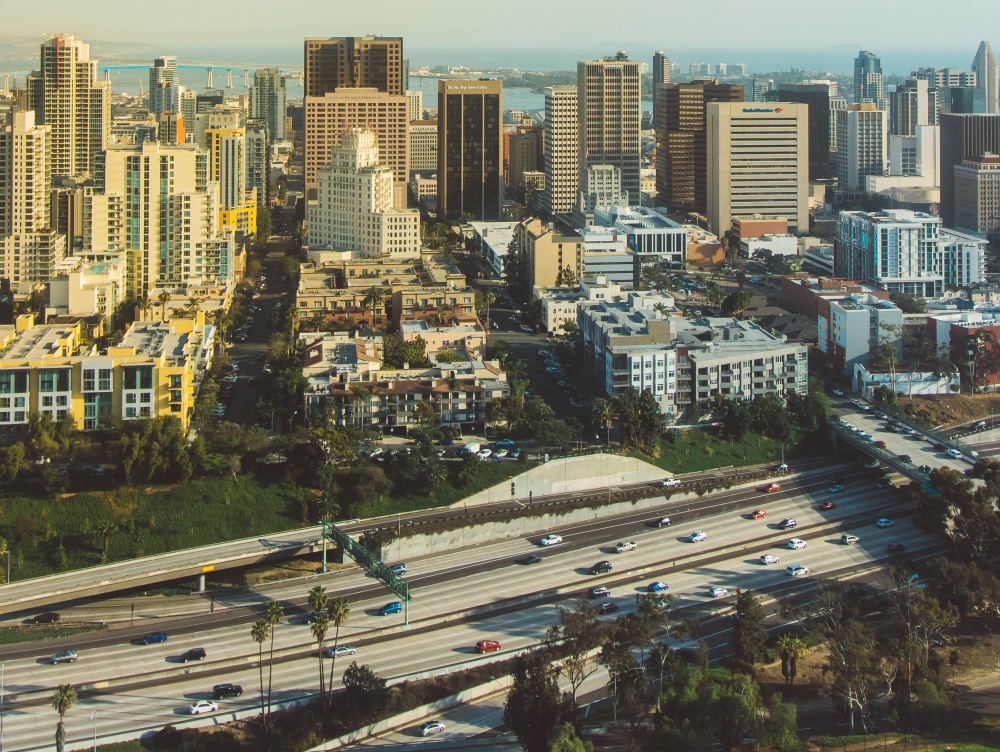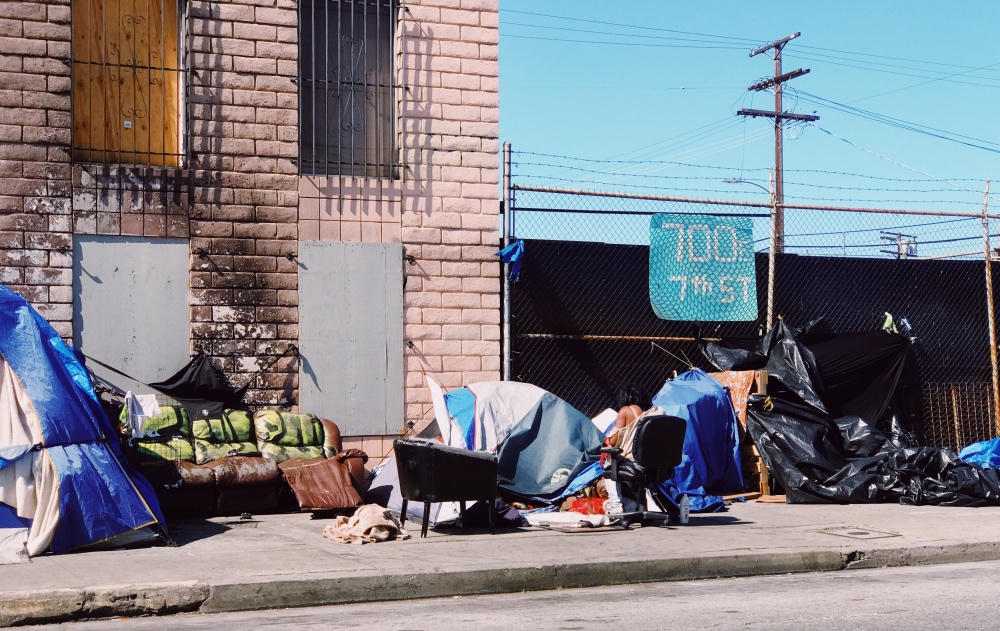
CAREY L BIRON, writing for Thomson Reuters Foundation, reports on how non-profit organisations – and churches – are working to help people sleeping in their cars after numerous cities passed laws criminalising such behaviour…
Washington, DC
Thomson Reuters Foundation
After he lost his job three years ago and could not pay his rent, 54-year-old Jamie La Croix was lucky to get a car – it saved him from sleeping in the bushes.
Yet that brought its own problems: municipalities throughout southern California where he lives have passed local laws against sleeping in a vehicle.
He would “try to find a parking lot – anywhere I can where there won’t be any law enforcement involvement,” La Croix, a part-time construction worker, told the Thomson Reuters Foundation. His situation, he added, was “very common”.

No sleeping. Many US cities, including San Diego, have passed laws banning people from sleeping in cars. PICTURE: Tyrel Johnson/Unsplash
Homelessness spiked in the United States following the 2008 economic recession, according to official statistics, although the numbers have since improved.
Cities nationwide responded in different ways, including passing laws that criminalise many of the situations that homeless people find themselves in.
“Now, instead of giving people a ticket, they’ll direct them to the safe parking lot.”
– Jamie La Croix
Local laws banning people from sleeping in a vehicle saw the greatest increase – the number of cities with such laws doubled to 81 between 2011 and 2014, according to the National Law Center on Homelessness and Poverty, a non-profit.
Across most of the San Diego region it is now illegal to live in one’s vehicle, and so, for the past year, La Croix was sleeping in his car at highway rest areas.
But that was difficult, he said, because the rules stipulate you cannot stay for more than eight hours at a time. And, he added, at times the rest areas could be dangerous.
In November, he heard of a programme offering a safe, legal place for those who needed to sleep in their vehicle. He has spent the past month there.
The project, run by a non-profit called Dreams for Change, provides clothing and food, and has a service to find housing and full-time work.
At this lot he has had “zero problems”. In fact, he said, two police officers recently asked him how they could get in touch with the organisers so they could tell others in need about the programme.
“Now, instead of giving people a ticket, they’ll direct them to the safe parking lot,” La Croix said.
There are no figures on the number of “safe parking” programmes across the country, but experts and organisers said there had been an uptick in interest in recent years.
Most such initiatives, they said, were on the West Coast. San Diego has three such programmes; two are run by the city.
“Most people forget about this group of homeless individuals – they think about the street homeless with addiction problems,” said Teresa Smith, chief executive of Dreams for Change, which since 2010 has run the lot where La Croix lives.
“After the recession we started seeing people coming in [to homeless shelters] that never really did before,” she said, noting that those who are helped include families and people from “across the professions”.
Over the past eight years, said Smith, the three local programmes have helped more than 5,000 people, including many families. In order to foster a sense of stability, people can stay as long as they need. Most average six to eight months.

Perceptions of homelessness often overlook people such as those who live in their cars, say advocates. PICTURE: Brandi Ibrao/Unsplash
Advocates said it was not only the public that overlooked car-bound homelessness. For decades, the government has focused spending on subsets of the homeless population – military veterans or those dealing with chronic homelessness, said Megan Hustings, director of the National Coalition for the Homeless.
That meant money for other groups had dried up, she said.
“And [now] you have to fit into a very specific profile to get homelessness assistance. That’s problematic and has led at least in some degree to the increase in the number of people living in vehicles,” she said.
Churches and other religious institutions also provide safe parking, making use of what are often large lots.
“We’re offering an option. We have an empty parking lot, and if folks find it useful, we want to make it available.”
– said Karina O’Malley, the safe-parking coordinator at Lake Washington United Methodist Church, outside Seattle.
“We’re offering an option,” said Karina O’Malley, the safe-parking coordinator at Lake Washington United Methodist Church, outside Seattle.
“We have an empty parking lot, and if folks find it useful, we want to make it available.”
O’Malley, who has also been involved for a decade running a homeless shelter, said safe parking was an important add-on even when shelter options were available. Pets, for instance, are often a “huge barrier” to getting into a shelter.
Under a round-the-clock programme that started in 2012, people can sleep in their car at the church lot, then go down the road to the shelter to shower, use computers and more, she said.
“But they’ll still want to come back to the parking lot and have a private place where they can lock the doors, have their pets, keep their stuff,” O’Malley said.
Each night, about 50 people sleep in the church parking lot under the programme that, she said, costs very little.
About six other churches operate in a loose network of safe parking lots in the Seattle area, said O’Malley, who fields calls from across the country from others interested in setting up similar programmes.
In March, a judge ruled against the city of Seattle after a homeless man’s truck was towed because it had not been moved within 72 hours, violating a local ordinance. The judge said the impoundment was illegal because the man had been using the vehicle as a home.
Even outside of formal “safe” programmes, parking lots have become focal points for outreach efforts targeting the homeless.
Five years ago, during its annual survey of homelessness, the city of Chesapeake, Virginia found dozens of people were sleeping in their vehicles at a local Walmart.
The national retailer has long allowed people to sleep overnight in their vehicles in its parking lots where possible.
“That blew everybody’s mind – we go there all the time and didn’t know,” said Antione Hines, who was helping to lead the survey.
“So then the churches asked if they could go back and help them out – then another church did, and then another church.”
Hines now oversees regular outreach as the programme manager for the Chesapeake Homeless Parking Lot Ministry and founder of a nonprofit, handing out meals and offering other help.
Although there have been “ups and downs” with the store management, Hines said, the programme now includes city assistance and coordination with the police department.
“These are the hidden. They’re hidden in plain sight,” said Hines of the homeless living in their vehicles.
“[But] this is a safe zone.”





